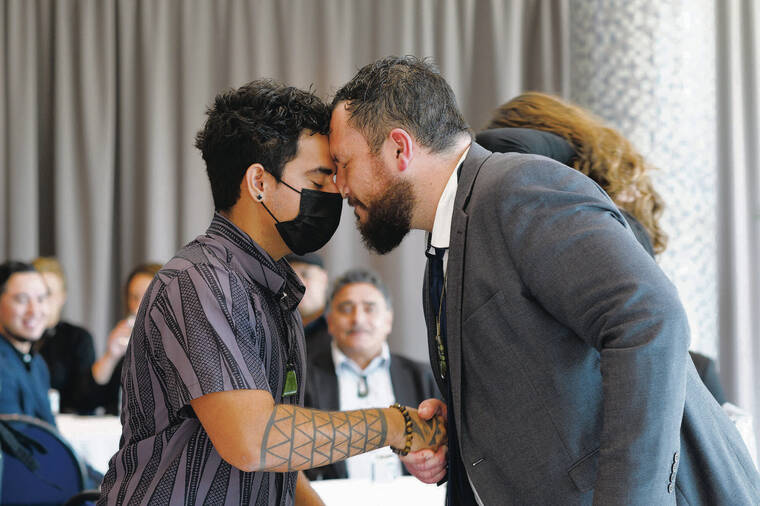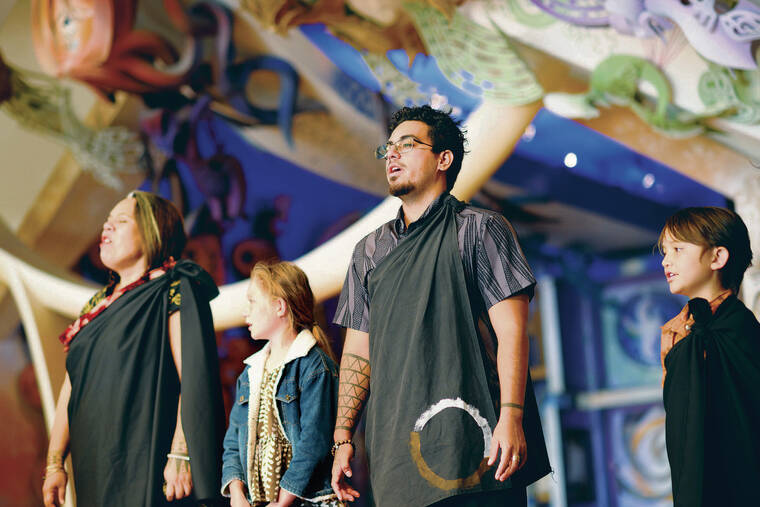The remains of three Native Hawaiians, illegally taken from Oahu in 1860, found their way to New Zealand, where they were housed in the Canterbury Museum in Christchurch for more than 150 years.
Now they have been brought home to be buried again as part of the latest repatriation effort of Hawaiian remains from distant institutions.
The skulls of the individuals were brought home late last month following extended negotiations with the museum.
Mehanaokala Hind of the Council for Native Hawaiian Advancement, along with Makoa Caceres and Kaipo Torco of Hui Iwi Kuamo‘o, took part in a traditional powhiri ceremony at Te Papa Tongarewa Museum of New Zealand in Wellington followed by a formal handover ceremony.
The three ancestors — a male age 20 to 30, a female age 20 to 30, and a female in her 40s — were taken in 1860 from the ahupuaa of Waikiki during the time of King Kamehameha IV and Queen Emma.
According to provenance information from the museum, William Green and R.J. Langhern Desha stole the skeletal remains from their burial grounds and gave them to William Henry Symes, who took them on a ship to New Zealand. In 1873, Symes, a medical doctor, donated a number of skulls to Julius von Haast, founder of the Canterbury Museum.
The effort to return the remains is the latest in a 30-year campaign that has brought some 3,000 iwi kupuna back to the islands from museums and institutions overseas.
That includes the 62 iwi kupuna that were recently returned in the last few months from Germany, England, Ireland and Scotland by Hui Iwi Kuamo‘o in conjunction with the Office of Hawaiian Affairs.
Native Hawaiians traditionally believe that the mana, or the spiritual essence and power, of a person resides in the bones, or iwi. For many Hawaiians, it is important for the bones of a deceased person to complete their journey and return to the ground to impart their mana.
The latest repatriation is the result of years of work by veteran iwi kupuna hunter Edward Halealoha Ayau and Hui Iwi Kuamo‘o to research and navigate the protocol involved in returning remains. The Office of Hawaiian Affairs also followed with a claim to the Canterbury Museum.
Hind, CNHA’s senior director of community programs, was in New Zealand in 2014 while she was employed by OHA, scoping out potential exhibit items at the Canterbury Museum for showing in Hawaii.
She said she asked the museum’s director face to face if there were any skeletal remains from Hawaii there, and he said no. Three years later, however, a Ph.D. candidate working at the museum reached out to Ayau to say there were in fact three Indigenous skulls from Hawaii there.
Winding negotiations followed until the museum finally agreed to give up the remains in 2020. But then New Zealand went into lockdown when the coronavirus swept over the globe, so the hand-off was delayed for a couple of years.
“We still had to jump through COVID hurdles (last month) but it’s something we had to do,” Hind said. You never know when a museum status change, such as a new director, could shut the door on an opportunity, she said.
Since January, CNHA has committed $25,000 in funding to support Hui Iwi Kuamo‘o’s efforts, which include significant travel costs abroad.
“Caring for our lahui (nation) means supporting not only our people today and the generations yet to come, but also our ancestors who came long before us,” Kuhio Lewis, CNHA chief executive officer, said in a statement. “CNHA is humbled to kokua Hui Iwi Kuamo‘o in its efforts to finally bring our kupuna home.”




